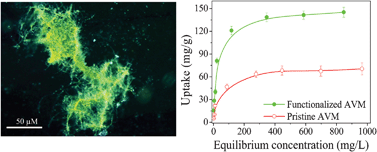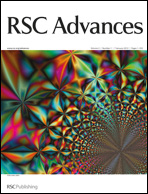Surface functionalization of Aspergillus versicolor mycelia: in situ fabrication of cadmium sulphidenanoparticles and removal of cadmium ions from aqueous solution
Abstract
Xanthate functionalization of Aspergillus versicolor mycelia (AVM) was carried out to synthesize


 Please wait while we load your content...
Please wait while we load your content...